Malicious Activity Detector (MAD) for Windows
One of the simplest goals of server security is keeping administrator credentials private. There is no better way to achieve this than through strict firewall rules that only allows specific IPs to authenticate. However, there are some situations where it is necessary to open a login prompt to the broader Internet. In this case, the only thing barring anonymous internet users from unauthorized access is your password. The stronger your password, the better off you are, but even the most cryptic passwords can be guessed given enough tries.
Malicious Activity Detector (MAD) helps protect you in these instances. It functions by monitoring login attempts to several services, and if it detects malicious activity, it applies a temporary block on that IP. If more attempts come in, the block continues to last longer. This method is exceptionally effective in preventing a successful brute-force attack while limiting the number of system resources expended.
Installation of MAD
Depending on the configuration and age of your server, you may already have it installed. Check the installation status by looking for an item in your Start Menu shown below.
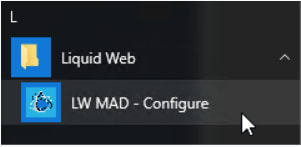
The program path is C:\Program Files (x86)\Liquid Web\MAD\MADGUI.exe
You may also check if “MAD.exe” is running from your Task Manager. If you don’t see it there, please Contact Support so that we may get it up and running for you. Once running, we can move on to the configuration.
Configuring MAD
MAD’s default settings offer protection for the most vulnerable services, and extra configuration is not required. That said, you may find yourself wanting to change its behavior, and we’re happy to give you the tools you need.
Let’s start with the most common change you may want to make: whitelisting and blacklisting. Opening the MAD Configure utility will get you on the right page. From here, you only need to choose the radio button for the list you want to modify, enter the IP, and click the button. You can remove entries in either list by right-clicking. This page also allows you to start or restart the service, but you shouldn’t need to use those functions.
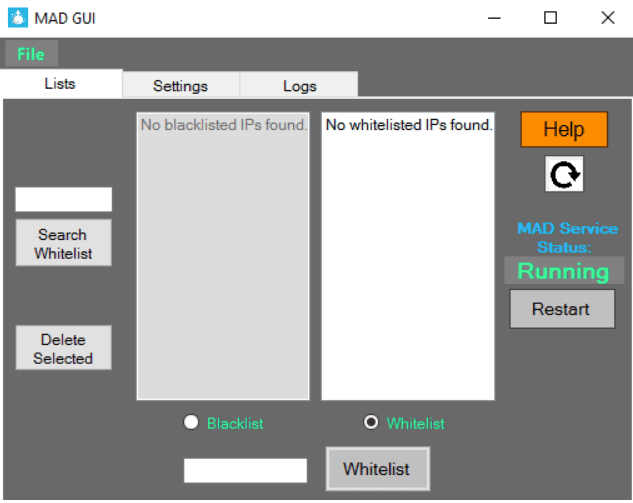
The next page is where most options are located. All of the service scanners list three choices for each: Enabled/Disabled, BlockThreshold, and Retention.
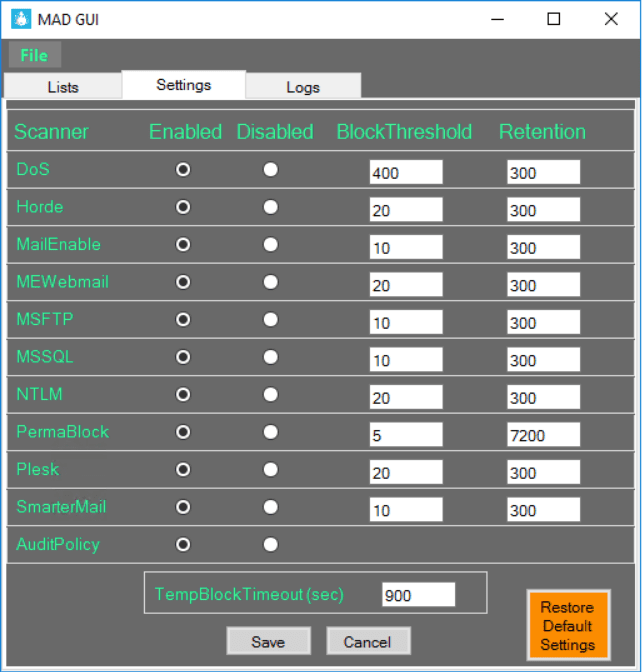
Enabled/Disabled -You may want to disable scanners for services that you do not have installed, but it is generally recommended to leave all options enabled due to minimal performance cost.
BlockThreshold – This setting controls how many ‘strikes’ it takes to be blocked. These are set fairly high by default to avoid affecting legitimate users, but you may want to lower the threshold to increase MAD’s sensitivity.
Retention -This refers to the size of the window that MAD looks at to determine if a user has met the BlockThreshold in seconds. By default, this is set to 300 (five minutes).
PermaBlock – Sometimes robots can’t take the hint after being temporarily blocked several times in a row. The PermaBlock list remedies this situation. By default the retention period is 2 hours, this scanner checks for IPs that have been temp blocked five times (or your custom BlockThreshold). If it gets a hit, it does as the name implies and adds it to your blacklist, where it is managed much like manual entries.
AuditPolicy – This setting determines if MAD is allowed to edit your login event auditing policy. Disabling AuditPolicy is not recommended and may prevent MAD from working as intended.
TempBlockTimeout -When a block is triggered on one of the scanners the offending IP address will be blocked for this amount of time. Measured in seconds with a default setting of 900 (15 minutes).
Reviewing MAD Logs
MAD creates logs of all of the actions that it takes. It is good practice to review them regularly to see what has been going on. For example, if a certain service seems to be getting attacked more often than others you may want to consider hardening your firewall rules or MAD’s configuration itself.
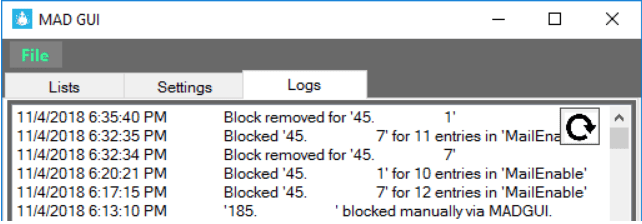
MAD also creates events in Windows Event Viewer under the ‘Applications and Services Logs’ folder. These events are most helpful for long-term investigation, as the folder will hold historical data for quite some time.
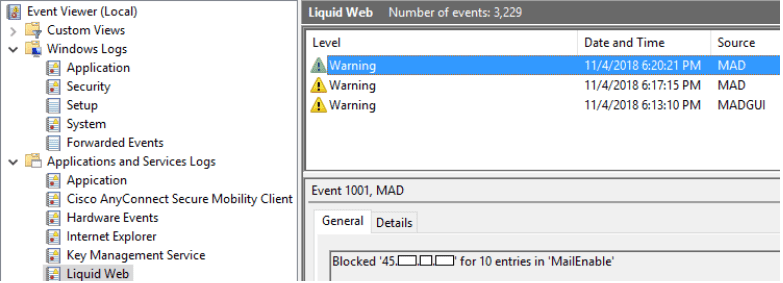
MAD for Windows is an excellent tool in your security arsenal, but a proactive plan is always better than a reactive one. We recommend utilizing Windows Firewall to ensure that only things that must be publicly accessible are. For further reading on security visit some of our other articles:
Security for Remote Desktop
Best Practices for Your Firewall
Related Articles:

About the Author: C. Jacob Martinez
Our Sales and Support teams are available 24 hours by phone or e-mail to assist.
Latest Articles
How to use kill commands in Linux
Read ArticleChange cPanel password from WebHost Manager (WHM)
Read ArticleChange cPanel password from WebHost Manager (WHM)
Read ArticleChange cPanel password from WebHost Manager (WHM)
Read ArticleChange the root password in WebHost Manager (WHM)
Read Article


